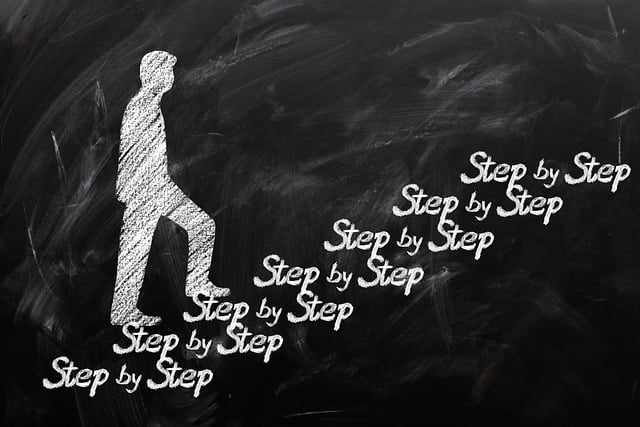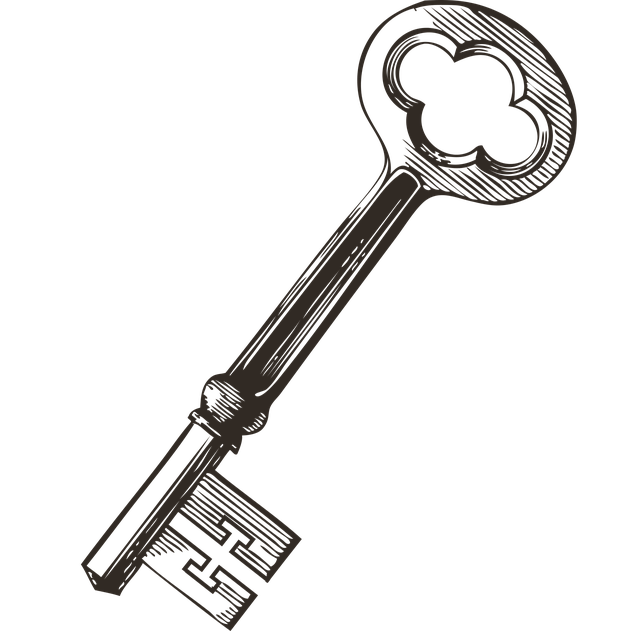Have you ever found yourself struggling to express your thoughts clearly and concisely on paper? If so, you’re not alone. Writing is often seen as a daunting task, requiring creativity and eloquence. But what if I told you that there is a formulaic approach that can help you navigate through this challenging process, breaking it down into manageable steps? In this article, we will explore Formula Writing Exercise A, a powerful tool designed to enhance your writing skills by focusing on the core principles that lay the foundation for effective communication. Get ready to unlock the secrets of conveying your ideas with precision, while maintaining a natural human tone that captivates your readers from the very beginning.
Contents
- Explore the Fundamentals of Formula Writing Exercise A
- Unveiling the Key Principles of Formula Writing Exercise A
- Mastering the Core Techniques of Formula Writing Exercise A
- Enhance Your Writing Skills with Formula Writing Exercise A
- Step-by-Step Guide to Excel at Formula Writing Exercise A
- Tips and Tricks to Perfecting Formula Writing Exercise A
- Unlocking the Secrets to Success in Formula Writing Exercise A
- Maximizing Your Potential with Formula Writing Exercise A
- Unleash Your True Writing Power
- Frequently Asked Questions
- To Wrap It Up
Explore the Fundamentals of Formula Writing Exercise A
In this exercise, we will dive into the fundamentals of formula writing. Formulas are essential tools in various fields, from mathematics and physics to chemistry and finance. Understanding how to construct formulas correctly is crucial for solving complex problems and equations.
To begin our exploration, we will first look at the basic components of a formula. A formula is composed of different elements, such as variables, operators, and constants. These elements work together to represent relationships and calculations.
Key elements of a formula:
- Variables: These symbols or letters represent unknown quantities or values that can change. They serve as placeholders for the values we want to find or manipulate.
- Operators: Operators are mathematical symbols or functions that perform specific calculations or operations on variables and constants. Examples of operators include addition (+), subtraction (-), multiplication (*), and division (/).
- Constants: Constants are fixed values that remain the same throughout a formula. They provide a known value used in calculations. Examples of constants include numbers like π (pi) or the speed of light.
By combining these elements correctly, we create powerful formulae that enhance our problem-solving abilities and unlock a wide range of applications. Exercise A will provide you with ample practice to solidify your understanding of the fundamentals of formula writing.
Unveiling the Key Principles of Formula Writing Exercise A
In this section, we will explore the fundamental principles behind Formula Writing Exercise A. Mastering these principles is crucial for successfully tackling this exercise and ensuring accurate results. So, let’s dive right in and discover the secrets to excelling in formula writing!
1. Understand the problem: Before attempting Formula Writing Exercise A, it is essential to thoroughly comprehend the problem statement. Read it carefully, highlight important details, and identify any specific requirements or constraints. This step lays the foundation for effective formula development.
2. Identify the variables: To construct a functional formula, you must first determine the variables involved. Analyze the problem carefully to identify all the relevant variables that play a role in the desired outcome. Note them down and their corresponding units, as they will form the basis of your formula.
3. Define the relationships: Once the variables are identified, it’s time to establish the relationships between them. Consider how the variables interrelate and what mathematical operations are required to derive the output. You may need to perform additions, subtractions, multiplications, divisions, or apply more complex mathematical functions.
4. Test and validate: After formulating your initial formula, it’s essential to test and validate its accuracy. Verify the formula against known examples or test cases to ensure it produces the expected results. If discrepancies arise, revise your formula and iterate until it consistently delivers reliable outcomes.
Mastering the Core Techniques of Formula Writing Exercise A
In this section, we will delve into the essential techniques required to become proficient in formula writing. Understanding how to construct formulas is a fundamental skill that can greatly enhance your effectiveness in various fields, from scientific research to data analysis.
To excel at formula writing, start by grasping the concept of variables. Variables act as placeholders for values that can change. Make sure to choose meaningful variable names that accurately represent the data or quantities they represent. Additionally, remember to always use proper syntax and follow the guidelines of the programming language or software you’re utilizing.
- Identify the problem: Before you begin crafting your formula, clearly define the problem you are trying to solve. Identify what values or variables are involved and the desired outcome.
- Break it down: Having a complex problem doesn’t mean your formula has to be cumbersome. Break down the problem into smaller, more manageable parts. Consider using sub-formulas or arranging the formula in steps.
- Use appropriate operators: Ensure you select the right operators for your formula. Different operators perform different mathematical operations, so understanding their functionalities is crucial. Some common operators include addition (+), subtraction (-), multiplication (*), and division (/).
By mastering the core techniques outlined in this exercise, you will be equipped with the necessary skills to tackle formula writing with confidence and precision. Regular practice and experimentation are key to refining your abilities, so make sure to explore various scenarios and applications to solidify your understanding.
Enhance Your Writing Skills with Formula Writing Exercise A
Are you looking for a fun and effective way to improve your writing skills? Look no further! Formula Writing Exercise A is here to help you take your writing to the next level. This unique exercise is designed to enhance your writing abilities by providing you with a formulaic approach that can be applied to various writing styles and genres.
Unleash your creativity: Formula Writing Exercise A encourages you to tap into your creative side while honing your writing skills. By following the provided formula, you’ll learn how to structure your ideas coherently and express them effectively. This exercise challenges you to think critically and develop your own unique style, while providing you with a framework to build upon.
Master diverse writing techniques: Whether you are a novice writer or an experienced wordsmith, this exercise offers something for everyone. From persuasive essays to short stories, Formula Writing Exercise A exposes you to a wide range of writing techniques. You’ll learn to engage your readers, evoke emotions, and craft compelling narratives. With regular practice, you’ll soon find yourself using these techniques effortlessly in your everyday writing endeavors.
Step-by-Step Guide to Excel at Formula Writing Exercise A
In order to excel at Formula Writing Exercise A in Excel, it is important to understand the basic principles and techniques involved. Here is a step-by-step guide to help you navigate through the exercise with ease:
1. Familiarize Yourself with the Formula Syntax: Take some time to understand the basic structure and syntax of Excel formulas. This will help you grasp the essential components and functions required for the exercise.
2. Identify the Objective: Start by clearly understanding the goal or objective of the Formula Writing Exercise A. This will enable you to choose the appropriate Excel functions and operators to use in your formulas.
3. Break Down the Task: Divide the task into smaller, manageable steps. Analyze the given data and determine the actions that need to be performed to achieve the desired result. This will help you tackle the exercise systematically.
4. Use Cell References: Instead of typing out values directly into formulas, use cell references. This allows for greater flexibility and makes it easier to update or modify data in the future.
5. Test and Validate: After writing your formulas, it is crucial to test and validate them. Make sure they are producing the expected results and adjust them if necessary. This iterative process will fine-tune your formulas and improve their accuracy.
By following these steps and practicing regularly, you will gradually become proficient in Formula Writing Exercise A and excel at solving complex problems in Excel. Remember, practice makes perfect, so don’t hesitate to experiment and explore different formula combinations to enhance your skills. Good luck!
Tips and Tricks to Perfecting Formula Writing Exercise A
1. Understand the question prompt:
Before attempting Formula Writing Exercise A, it is crucial to thoroughly grasp the question prompt. Break down the given equation and identify the elements involved. Analyze the relationship and pattern between variables to ensure a comprehensive understanding. Take note of any specific conditions or constraints mentioned. This initial step will greatly enhance your ability to write an accurate and concise formula.
2. Develop a logical approach:
A crucial tip for tackling Formula Writing Exercise A is to establish a systematic and well-organized approach. Begin by identifying the independent variables and their corresponding functions. Next, define any dependent variables, differentiating parameters, or constants involved. It may be helpful to create a step-by-step plan or visual diagram to map out the necessary calculations and evaluations. Ensure your methodology is clear, logical, and easy to follow. Breaking down complex formulas into smaller, manageable parts will not only make the task easier but also increase the accuracy of your final answer.
3. Utilize example problems:
Enhance your skills by practicing with example problems. Confronting various equations and scenarios will help you familiarize yourself with common patterns and formulas within the domain of Formula Writing Exercise A. Start with simpler examples and gradually work your way up to more complex ones. Identify and understand the unique features and techniques employed in each problem. By exposing yourself to a variety of situations, you will build a solid foundation and gain confidence in formulating equations accurately and efficiently.
In summary, achieving proficiency in Formula Writing Exercise A requires a combination of understanding the question prompt, developing a logical approach, and practicing with example problems. With these tips and tricks, you can lay the groundwork for mastering this exercise and confidently tackle any formula-writing challenge that comes your way.
Unlocking the Secrets to Success in Formula Writing Exercise A
Formula writing exercises can often seem perplexing and challenging at first glance, but fear not! We have compiled some insightful tips and tricks to unravel the secrets to success in Formula Writing Exercise A. Mastering this exercise will not only enhance your problem-solving skills but also equip you with a valuable tool for future mathematical endeavors. So, let’s dive in and unlock the formulaic mysteries together!
1. Understand the given variables: Before attempting any formula writing exercise, comprehending the variables involved is crucial. Familiarize yourself with what each variable represents and its significance in the problem. Take your time to analyze the problem statement and recognize any known constants or values.
2. Identify the problem type: Different formula writing exercises may require distinct approaches. Determine the category of the problem, such as geometry, algebra, or physics, to streamline your thought process. This will help you recognize familiar formulae or build formulas based on the problem’s context. Keep in mind that the same formula can be adapted and modified to fit various problem scenarios.
Maximizing Your Potential with Formula Writing Exercise A
Unleash Your True Writing Power
Welcome to Formula Writing Exercise A – a surefire way to maximize your potential and take your writing skills to unprecedented heights! Whether you’re an aspiring novelist, a professional content creator, or simply someone who wants to express themselves with more impact, this exercise is designed to help you uncover the hidden reservoirs of your creativity and bring your words to life like never before.
In this exercise, we will delve into the art of formula writing and unlock fantastic techniques that will revolutionize your approach to expressing ideas. With clear examples and step-by-step guidance, you’ll learn how to construct perfectly structured sentences that captivate readers and convey messages with precision and clarity. By mastering these formulas, you’ll not only enhance your writing but also gain confidence in your ability to engage, persuade, and inspire others through the power of your words.
- Learn the framework behind compelling storytelling techniques.
- Discover how to craft vivid descriptions that immerse readers in your world.
- Create dynamic character dialogues that breathe life into your narratives.
Don’t miss out on this opportunity to elevate your writing to unimaginable heights. Join us as we embark on a transformative journey that will unleash your inner wordsmith and enable you to harness the formidable power of formulas. Get ready to captivate your audience and leave a lasting impact with your words!
Frequently Asked Questions
Q: What is Formula Writing Exercise A - Explore the Core Principles?
A: Formula Writing Exercise A – Explore the Core Principles is a writing exercise designed to help individuals develop a strong foundation in writing by exploring and understanding the core principles of effective composition.
Q: What does this exercise aim to achieve?
A: The primary goal of Formula Writing Exercise A is to familiarize writers with the fundamental elements and strategies of writing, enabling them to apply these principles in their own work. It seeks to enhance the overall quality and clarity of written communication.
Q: What are the core principles covered in this exercise?
A: Formula Writing Exercise A delves into various core principles, including crafting clear and concise topic sentences, using transition words and phrases effectively, structuring paragraphs, and developing cohesive and coherent arguments. It also emphasizes the importance of proper grammar, punctuation, and spelling.
Q: Why are these core principles important in writing?
A: Mastering these core principles is essential for effective writing because they lay the groundwork for clear and logical communication. By employing these techniques, writers can ensure that their ideas are conveyed coherently, engagingly, and with precision.
Q: Who is this exercise suitable for?
A: Formula Writing Exercise A is suitable for individuals of all writing levels, from beginners to advanced learners. Whether you’re a student looking to improve your academic writing skills or a professional aiming to enhance your overall written communication abilities, this exercise can benefit you.
Q: How does this exercise work?
A: This exercise typically involves a series of writing prompts and structured exercises that focus on one core principle at a time. Participants are encouraged to practice applying these principles in various writing scenarios, such as crafting paragraphs, essays, or even creative pieces.
Q: Can this exercise be completed independently?
A: Absolutely! Formula Writing Exercise A is designed to be completed individually, making it a convenient tool for self-study. However, it can also be used in a classroom setting or as part of a writing workshop to encourage collaboration and feedback.
Q: Are there any resources or materials available for support?
A: Absolutely! Alongside the exercise, there are numerous resources available such as online tutorials, writing guides, and sample exercises specifically tailored to each core principle. These resources are readily accessible and provide further assistance in understanding and practicing the principles.
Q: How long does it take to see improvement through this exercise?
A: The time required to see noticeable improvement may vary from person to person, but consistent practice of the core principles explored in Formula Writing Exercise A can lead to significant improvements in one’s writing skills in a relatively short time. Dedication, patience, and continued effort are key to achieving the desired outcome.
Q: Are there any additional exercises or levels to explore after completing Formula Writing Exercise A?
A: Yes! Upon successfully completing Formula Writing Exercise A, writers can progress to more advanced exercises, such as Formula Writing Exercise B or even explore additional specialized writing techniques geared towards specific genres or professional needs.
Remember, mastering the core principles is just the beginning of an exciting journey towards becoming a confident and proficient writer!
To Wrap It Up
In conclusion, Formula Writing Exercise A allows writers to delve into the core principles, nurturing their skills and enhancing their writing abilities.









